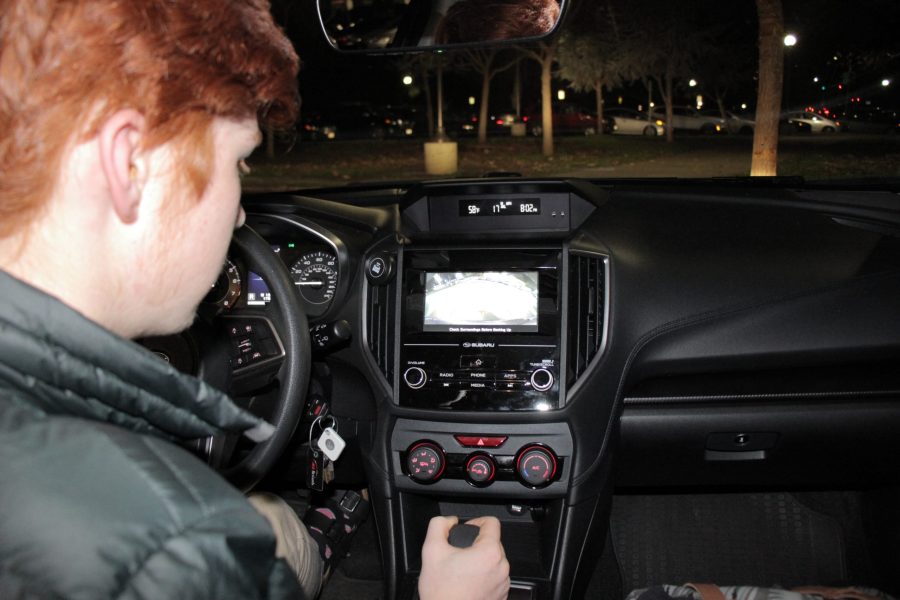In 2019, around 26,730 people died from motor vehicle accidents. The majority of these were related to human error, according to the National Traffic Highway Safety Administration. To combat this, in the last few decades, automotive technology has made multiple wheel revolutions forward.
Companies have developed rear-view cameras, blind-spot monitors and emergency brake assist, which are just a few examples of new safety devices. Over the past few years, these devices have been standardized in motor vehicles.
Nearly 100 years ago, the automatic transmission was invented. It slowly made its way into more and more vehicles, freeing drivers from the struggle of shifting gears manually.
Today, the vast majority of drivers depend on auto-transmission technology.
Despite this, auto teacher Doyle Knight said he drives older cars without new features, as he believes they make some drivers rely on their cars and not think for themselves.
“I think (the technology) can help them, but also hinder them,” Knight said.
The rear-view camera, or backup camera, is a form of car technology that has been around since 1956, but in May 2018, it finally became standard for all cars according to the NHTSA. It allows drivers to view where the car is backing into, without having to actually turn their head and look behind them.
These are designed to prevent “back-over” incidents when a backing vehicle hits a person or other car, but they may come with more problems.
“(New drivers) don’t know the proper technique for backing up, so they rely on the cameras too much,” Knight said. “So what happens if the camera goes bad? Yeah, they’re going to figure it out, but they’re not going to be very good at it.”
Senior Kai Douglas drives both a minivan and Prius, but said the Prius is easier to drive because of the cameras.
According to the NHTSA, in 2008, when backup cameras were being sold in only 32% of cars, there were 13,000 injuries annually from back-over incidents. But three years later, when backup cameras were sold in 68% of new cars, the injury rate went down 8%, to 12,000.
“It (back-up camera) lets you be a little mentally lazy and doesn’t show you everything you need to see, but it feels like enough,” Douglas said. “It lets you be a little less careful when backing out, like not turning your head or things like that.”
More recently, the blind spot monitor has emerged as a safety measure in many new car designs. Positioned on the side-view mirror, the detectors light up when they sense a car in their blind spot. Drivers can see if there is a car in their blind spot without looking behind him.
Sophomore Ben Antonow, a new driver this year, said he utilizes the cameras on his 2017 Subaru Impreza frequently.
“It’s something that really helps me,” Antonow said, “Especially when it’s dark, I don’t know how I’d drive without them.”
Just like backup cameras, blind spot detectors let drivers rely on technology instead of their abilities.
Another driving feature is Google Maps, a web mapping system that plans routes for both drivers and pedestrians. It uses aerial photography, satellite imagery, street maps and real-time traffic conditions to plan the quickest route of travel.
According to Mobile Marketer, Google Maps is the #1 navigation app, and six times more popular than any other navigation app.
“It is so useful; it always can get me from point A to point B without much of a hassle,” Antonow said.
Another convenient feature it shows is the arrival time.
“When I was picking my kids up from school, I was in traffic and didn’t know what time I would get there to pick them up,” Knight said. “With Google maps I know it’s two minutes, it’s three minutes, so you know it’s not as stressful.”
While car technology may cause drivers to be careless in some situations, there is no doubt it is still useful.
“Not all drivers are good drivers, so it can be really helpful,” Knight said.
Just like the introduction of automatic transmission a century ago, newer safety features have embedded themselves in automotive sales and in the coming decade, we should be prepared for many more.

